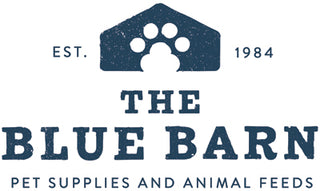
Chicken Advice
Chickens are becoming increasingly more popular to keep as pets, with the main attraction being fresh eggs. They are very inquisitive and friendly and each have their own personality. Female chicks are known as pullets until they become one year or start laying and are then known as hens. Male chicks are known as cockerels. Depending upon breed, chickens usually live between 8 to 15 years.
Diet
Chick Crumb
Should be fed from 1 day old until they are 8 weeks old. There are two types available non-medicated and medicated. Medicated chick crumbs contain ACS which stands for 'anti-coccidiostat’. This will help prevent the birds from contracting coccidiosis which is a parasitic disease of the intestinal tract.
Rearer/grower pellets
Can be fed from 6 weeks of age to 18 weeks. Contains high levels of amino acids and minerals and also contains ACS.
Laying pellets/mash
Fed from 18 weeks as the pullet comes into lay. These two feeds contain the same nutrition in two physical forms. Both feeds are complete and contain high levels of calcium, phosphorus and vitamin D3. It should be fed approximately 1 Kg/bird/week on an ad-lib basis.
Mixed Corn
Is a mixture of whole wheat and split maize. Mixed corn is a treat, feed no more than a handful per day to your birds and scatter it to encourage foraging and exercise.
Always have fresh water available for your chickens.
Feed containing ACS should ONLY be fed to chickens!
Treats
Greens such as cabbage, cauliflower leaves, spinach, grass clippings, dandelions and other greens around the garden. Chickens also love meal-worms, they are high in protein, vitamins and oils. A small scattering will encourage natural foraging.
Housing
Size
It is recommended that each chicken should have around 8” square floor space and have access to the outdoors.
Litter
Wood shavings is the cleanest bedding to provide however, straw can also be used. Other bedding such as Easichick and Megazorb are available.
Nest box
Is best placed in the darkest part of the house as hens like to lay their eggs in secret places. Make sure you have easy outside access to gather your eggs. Shavings or straw can be placed in the nest box.
Security
It is very important that your hen house is protected from vermin i.e foxes, rats. This can be done by covering all ventilation areas with wire mesh.
Cleaning
Weekly cleaning is recommended and that all litter is changed.
It is also important that your birds have a perch as this is a natural sleeping behaviour.
Companionship
It is recommended that if keeping chickens as pets you should have at least 3 hens (female chickens) that get on well together.
Enrichment
Just like any other per it is important that you provide enrichment for your chickens. Not enough stimulation can lead to problem behaviours such as feather pecking, bullying and egg eating to name a few. These behaviours can be avoided by regularly health checking your flock and cleaning the coop as this changes their environment and chickens are intrigued by anything new. Other ideas include compost piles as this will encourage foraging, dust bathing area, climbing/perching places and interactive treat dispensers.
Specifically for Ducks
Ducks and other fowl cannot have feed containing ACS as it is toxic to them. Therefore, the ducklings must be fed a non-medicated crumb. Argo baby chick crumbs and the Versele Laga duck range are both suitable.
Versele Laga do a full range of feeds suitable for ducks, geese, swans and other waterfowl.
Ducks also need access water throughout the day. However, domestic ducks only spend around 10% of their time on water, so a plastic water tub that can be tipped out and refilled is much cleaner than a small fixed pond that will soon get full of mud, muck and feathers. The water must be deep enough for them to dip their heads and enough room to bathe.
Health
Red Mites
Red Mites live in the cracks of chicken houses (typically under perch ends) coming out at night, crawling onto your birds for a feed. They are most active in the warmer months usually May to October and will become dormant over the winter.
Red Mite is not usually noticed until you are over-run with them. When hens are being bitten, they can refuse to go in to roost at night, they will become anaemic, can stop laying and their combs will go pale.
There are many products available on the market to help prevent and treat red mite.
Worming
The only licensed product available is Flubenvet 1% premix. Which can be sold by a suitably qualified person, we have several in store. There are other products available on the market that create an inhospitable environment for parasites such as Verm-X. However, these products are not licensed wormers and have no proof of efficacy.
LiceChickens can also suffer from Lice which are golden in colour and are approximately 1-3 mm in length. These lice are fast moving and lay their eggs which are white under their wings or at the base of their feathers. The lice feed by biting your chickens and feed of the blood and fluid. A mild infection of lice can cause mild irritation but large numbers lead to weight loss, restlessness and a reduction in the numbers of eggs laid.
They tend to rapidly increase in number around the autumn and winter. Lice only live a few days and are often transmitted by direct contact.
